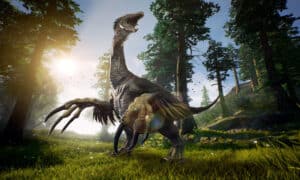Can you believe that there are extinct animals that have later been found alive? With the ocean being essentially endless, there’s no denying that we have a lot to learn. It being virtually unexplored, who knows what else is out there?
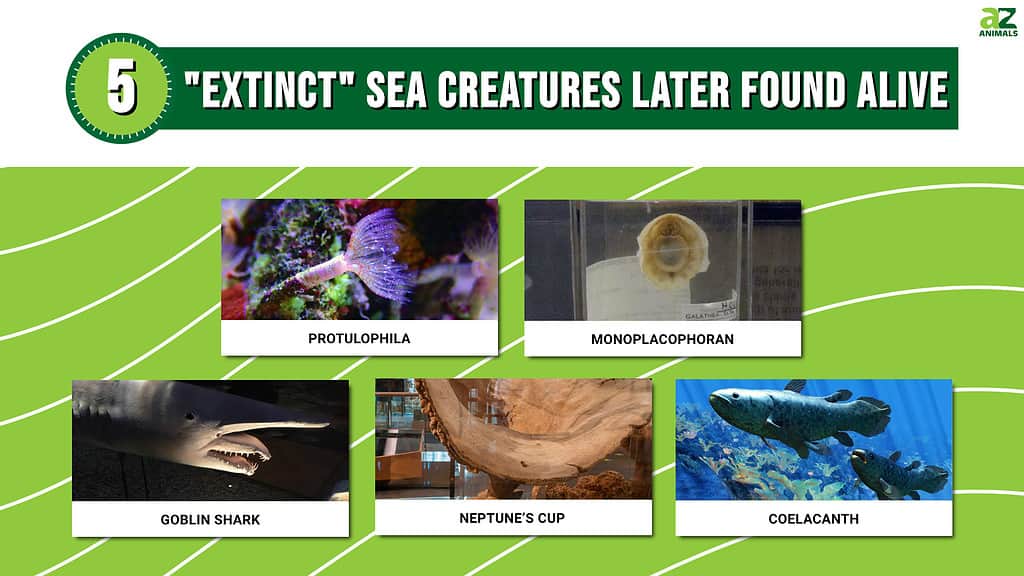
Scientists and researchers have discovered five sea creatures that were once declared extinct still living! When the death of the last member of a species is beyond a reasonable doubt, that species is considered extinct.
Let’s take a look at these ocean critters that surprised everyone by making a return!
Protulophila
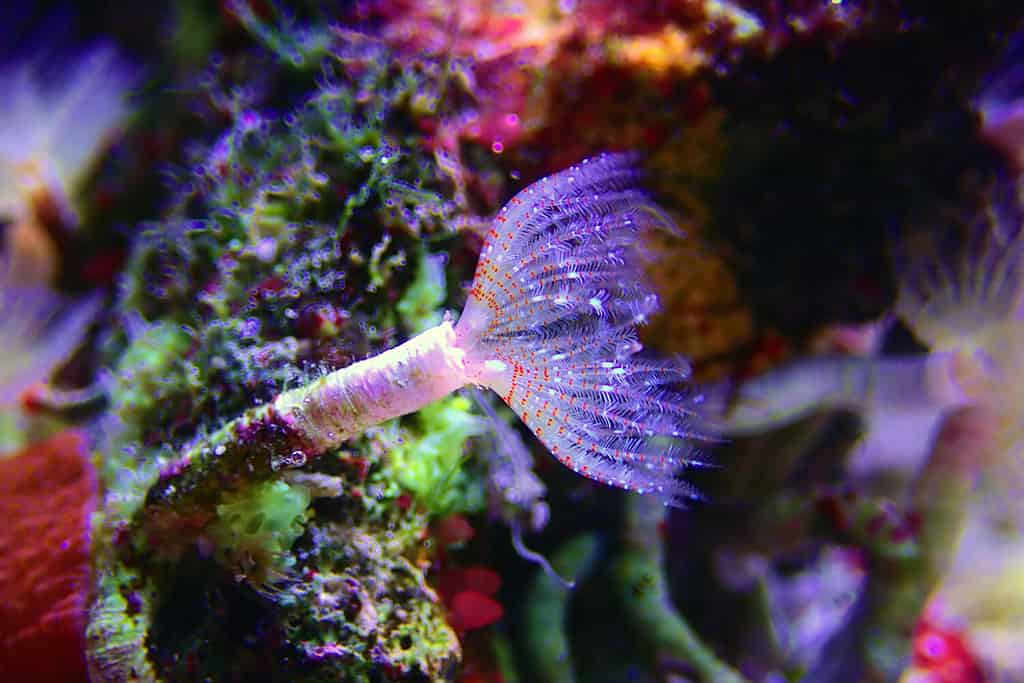
A colony hydroid with small polyps called Protulophila gestroi lives in the calcareous tubes of serpulid fan worms, like this one.
©Vojce/Shutterstock.com
A colony hydroid with small polyps called Protulophila gestroi lives in the calcareous tubes of serpulid fan worms. It was believed to have vanished four million years ago. Before that, it was thought to have existed since the Jurassic era. On certain tube worm samples gathered in 2008, there were live Protulophila beings discovered.
Until recently, marine deposits in Europe and the Middle East were known to contain this tiny, carnivorous relative of corals and sea anemones. The researchers next examined tubeworms kept in the Invertebrate Collection in Wellington and found cases of surviving Protulophila that had formerly gone unnoticed.
This small organism, which lives in colonies, measures less than 0.1 mm in size. It is attached to a solid object at first as a polyp, then it branches off and changes into a little jellyfish. After the 2008 discovery, the researchers gathered new Protulophila for gene sequencing.
Monoplacophoran
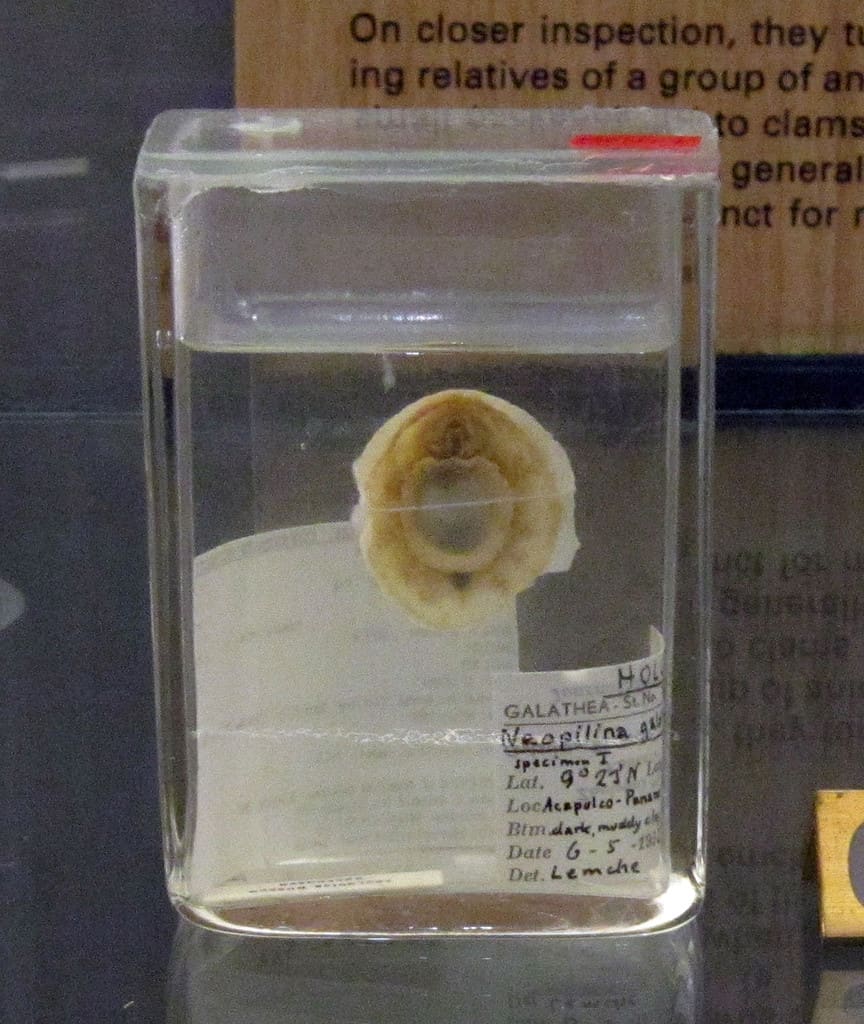
They have been discovered off the coastlines of Central and South America at depths of about 19,000 feet.
©1,366 × 1,617 pixels, file size: 1.35 MB, MIME type: image/jpeg – License
One of the most significant discoveries in contemporary biology occurred in 1952 when living monoplacophorans, which were previously only known from Paleozoic fossils, were found. Nearly 20 additional species have been identified since the discovery of the most recent species (Neopilina galathaea).
Off the coast of Costa Rica, in 1952, six live monoplacophorans were discovered from a depth of 11,700 feet. It was once believed that they went extinct several million years ago. Less than 10 species of monoplacophorans currently exist, notably Neopilina galatheae, N. ewingi, and N. valeronis.
They have been discovered off the coastlines of Central and South America at depths of about 19,000 feet. On the continental shelf and seamounts, typically in the very deep sea, monoplacophorans can be found on both softer bottoms and harder substrates.
The fact that certain Paleozoic taxa are connected to comparatively shallow-water wildlife suggests that their movement to the depths of the water is a more recent development.
Goblin Shark
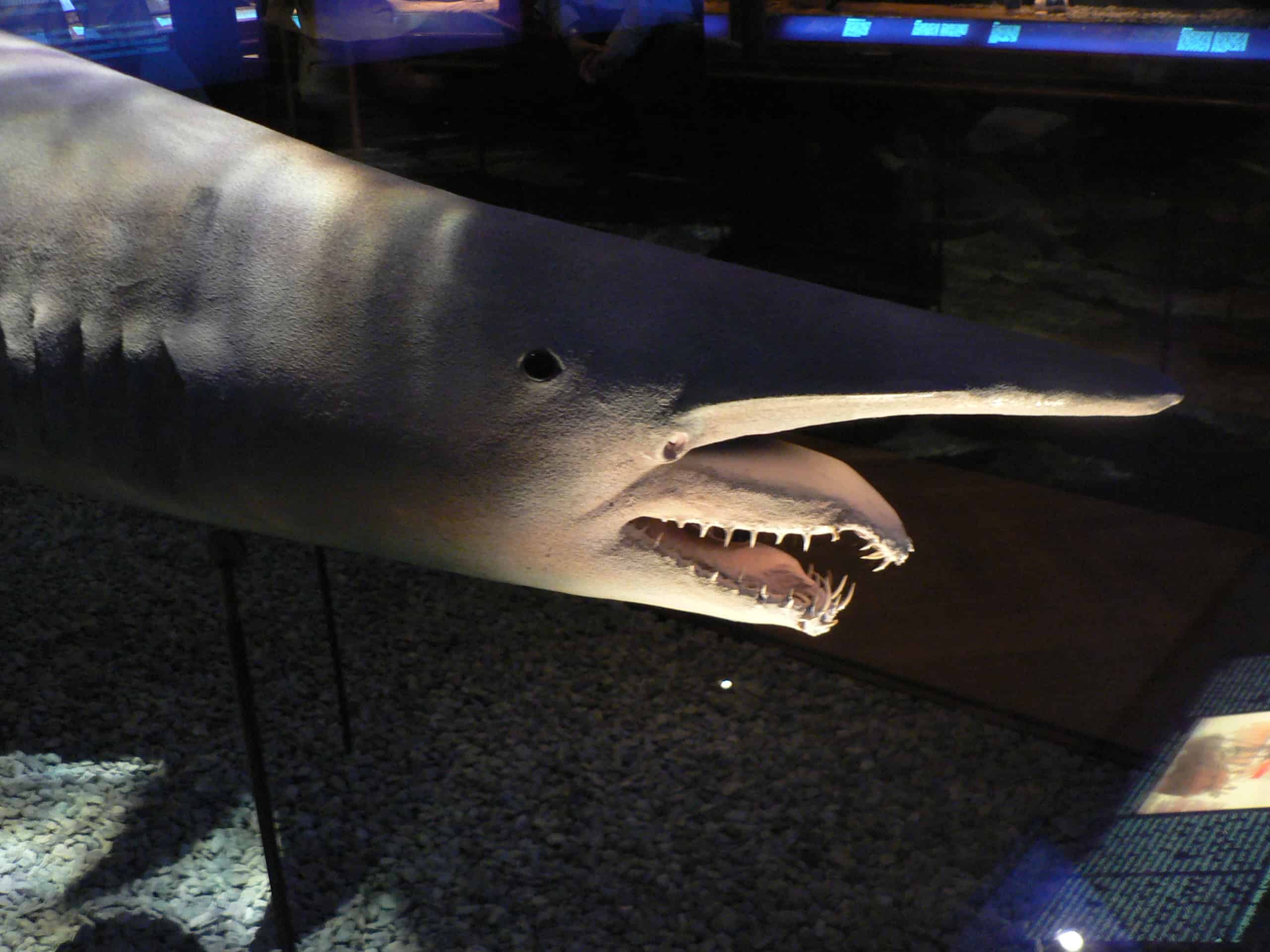
The Goblin shark is nicknamed “hobgoblin shark” in Spain and “imp shark” in France.
©Peter Halasz / CC BY-SA 3.0 – License
The goblin shark looks like something out of a horror movie. These sharks, which are the only living members of the mitsukurina family, developed 125 million years ago during the beginning of the Cretaceous period.
The extremely bizarre-looking Goblin Shark possesses a staggering number of long, pointed teeth and a strangely curved snout. Goblin sharks continue to thrive today, and they are often found around continental edges and towards the ocean’s bottom.
It’s important to note that these types of sharks are creeper fish, and it’s possible that they once shared the earth with dinosaurs. Goblin sharks are rarely seen close to the surface of the sea, and very few of them have been captured on film.
However, because of how strikingly similar their current form is to the extinct goblin species, goblins are sometimes referred to as living fossils.
Neptune’s Cup
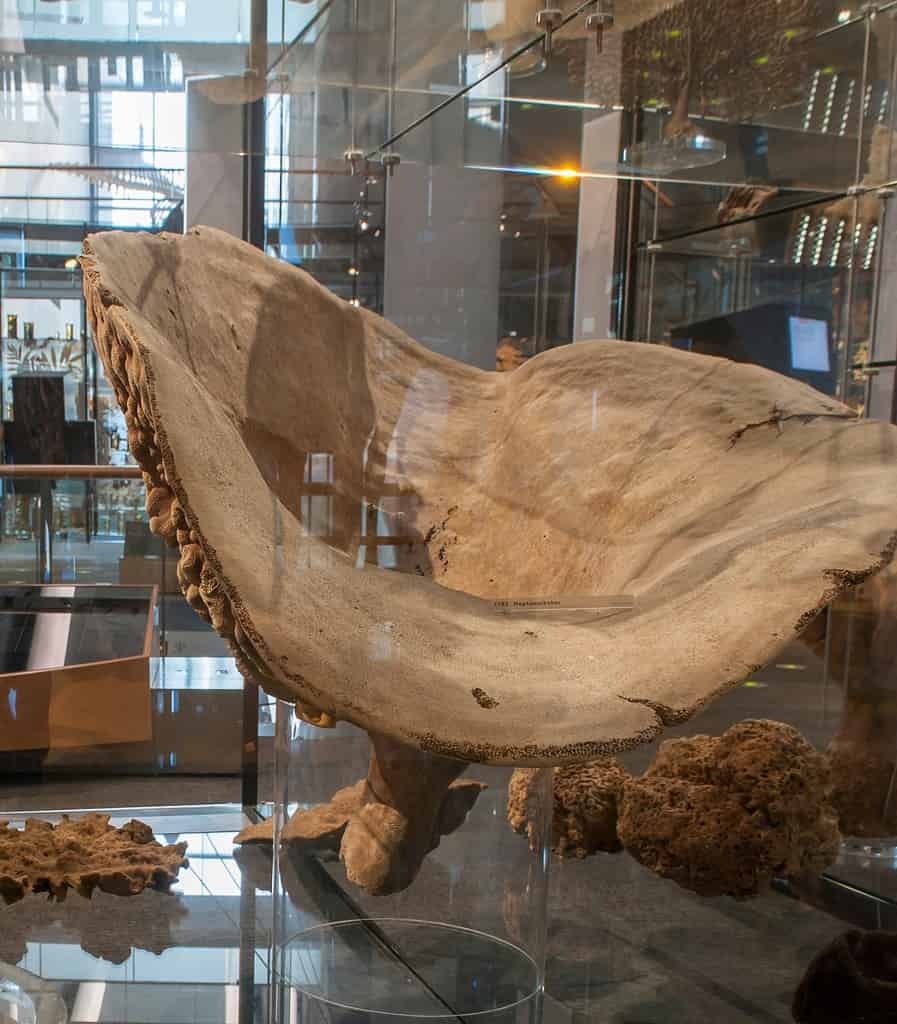
Off the southern islands of Singapore, marine biologists came across an unusual-looking sponge in March 2011 while conducting a typical survey dive.
©1,900 × 2,170 pixels, file size: 1.23 MB, MIME type: image/jpeg – License
The Neptune’s Cup sponge, also called Cliona patera, was discovered for the first time in Singaporean waters in 1822. Historical documents indicate that the Neptune’s Cup sponge was popular during Sir Stamford Raffles’ period. According to a British official’s testimony from 1830, a large amount of these massive spongers were sent to them.
However, the number of Neptune’s Cup sponges in our waters rapidly decreased, and they were last observed in the 1870s. It appears to have vanished in various coastal waters as well; it was last discovered in 1908 off Bantam in West Java, Indonesia. This prompted a lot of scientists to think that the sponge was extinct everywhere.
Off the southern islands of Singapore, marine biologists came across an unusual-looking sponge in March 2011 while conducting a typical survey dive. Mr. Lim Swee Cheng, a sponge expert from Singapore, later identified it as a Neptune’s Cup sponge.
Given the Neptune’s Cup sponge’s recent reemergence in the area’s coastal waters and its historical connection to Singapore, there was a lot of interest in its rediscovery.
Coelacanth
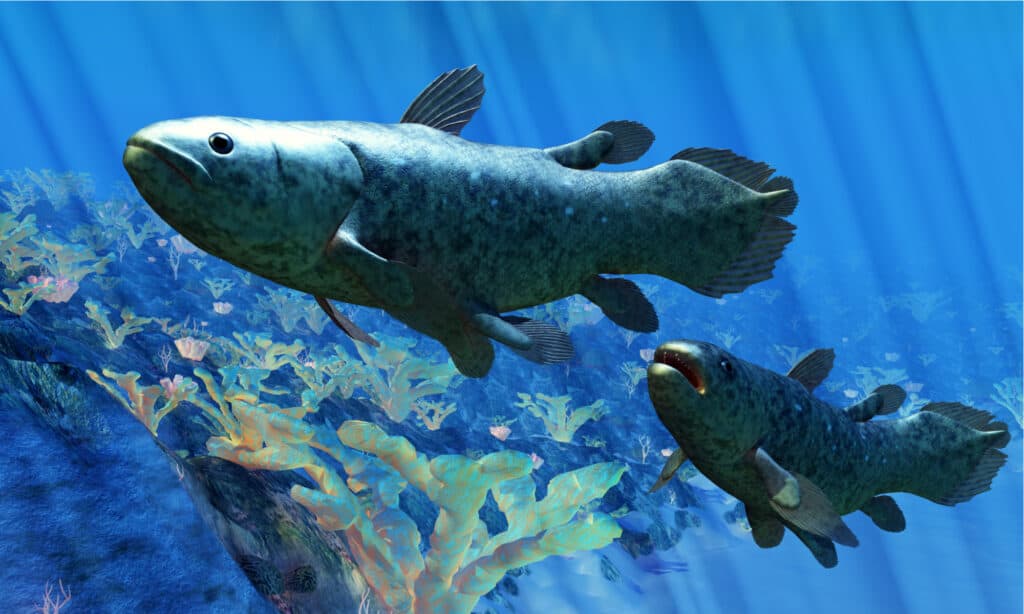
The Coelacanth fish was believed to be extinct but was discovered in 1938 to still be living.
©Catmando/Shutterstock.com
Last but not least, let’s talk about the Coelacanth. The coelacanth is a species of live fish that has a variety of distinguishing features. Previously only discovered from fossils, coelacanths were believed to have vanished 65 million years ago. Extinct through the same great extinction that wiped out the dinosaurs.
The earliest records go back as far as 360 million years ago. Although, the most recent fossil evidence is from about 80 million years ago. Coelacanths once made up a sizable group. They had over 90 legitimate species that were found in both freshwater and marine environments all over the world.
There are currently just two known living species. Coelacanths once inhabited a range of environments, spanning shallow waters, freshwater lakes, streams, and deeper marine regions. Coelacanths are now mainly associated with deep-ocean volcanic regions, such as the Comoros Islands.
Summary Of 5 “Extinct” Sea Creatures Later Found Alive
| Rank | Extinct Sea Creature | Found Again In |
|---|---|---|
| 1 | Protulophila | 2018 |
| 2 | Monoplacophoran | 1952 |
| 3 | Goblin Shark | Never extinct – always existed |
| 4 | Neptune’s Cup | 2011 |
| 5 | Coelacanth | 1938 |
The photo featured at the top of this post is © Vladimir Wrangel/Shutterstock.com
Thank you for reading! Have some feedback for us? Contact the AZ Animals editorial team.




